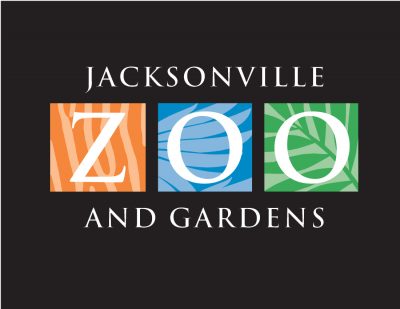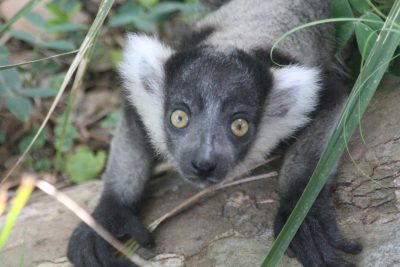Tell us a little bit about the history of the Jacksonville Zoo and Gardens.
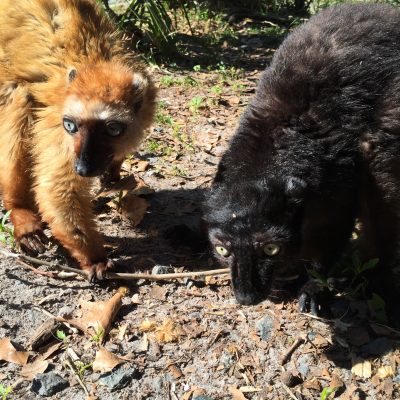
Blue-eyed Black lemurs. Credits: Lynde Nunn
Jacksonville Zoo and Gardens (JZG) was founded in 1914 as a small municipal zoo located in the Springfield area of Jacksonville, Florida. In 1925, it moved to the current 117-acre location along the Trout River in north Jacksonville. JZG has been an American Association of Zoological Parks and Aquariums (AAZPA)/ Association of Zoos and Aquariums (AZA) accredited zoo since 1987. As of July 1, 2017, the animal population includes 3,024 animals of 273 different species.
Which lemur species do you work with?
Lemurs have been in the JZG animal population since at least 1976 and have included five different species:
- Ring-tailed lemurs (Lemur catta),
- Black lemurs (Eulemur macaco macaco),
- Black-and-white ruffed lemurs (Varecia vagiegata),
- Red ruffed lemurs (Varecia rubra), and
- Blue-eyed black lemurs (Eulemur flaviforns).
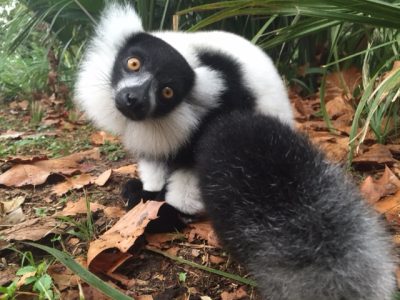
Black and White Ruffed Lemur. Credits: Lynde Nunn
JZG lemur care staff have significant experience in managing diabetic and geriatric individuals, as well as mixed-species groups. Currently housed species include a bachelor group of Ring-tailed lemurs and a breeding group of Black-and-white ruffed lemurs. Red ruffed lemurs were phased out in 2008 to make space for breeding Black-and-white ruffed lemurs. A pair of Blue-eyed black lemurs was in residence from late 2014 to early 2017, to assist population management and provide JZG staff experience with the species.
The opening of a new lemur facility in 2018 will allow for expansion of the JZG lemur population, including the return of Blue-eyed black lemurs and the first acquisition of a Coquerel’s sifaka.
How does the Jacksonville Zoo and Gardens help lemur conservation?
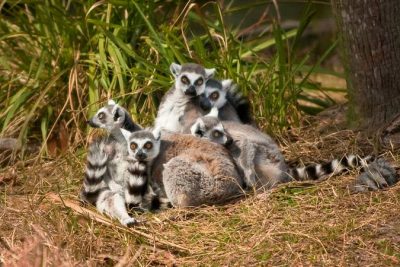
Credits: The Jacksonville Zoo
Sponsoring Member of the Madagascar Fauna and Flora Group
JZG is actively involved in both in-situ and ex-situ lemur conservation. As a sponsoring member of Madagascar Fauna and Flora Group (MFG), also a member of the Lemur Conservatino Network, the institution not only provides ongoing support for MFG programs, but also has provided additional funding to help with special requests and emergency responses.
Supporting the AZA Species Survival Plan for Lemurs
As a participant in AZA Species Survival Plans (SSPs) for all species in residence, JZG supports scientifically managed assurance populations that help safeguard the survival of endangered lemur species. JZG Supervisor of Mammals Tracy Fenn serves on the steering committee of the Prosimian Taxon Advisory Group (PTAG) and chairs the PTAG’s Pet Trade Committee, which works to address the issue of prosimians in personal possession.
JZG has special interest in raising awareness about the animal welfare, public health and safety, and conservation risks associated with prosimians in the international pet trade.
What are some of your recent achievements?
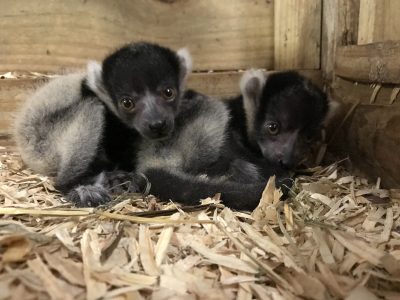
Baby black and white ruffed lemurs! Credits: Lynde Nunn
We are very proud of our recent accomplishments that support lemur conservation.
- June 16, 2017 – Birth of the second litter of MEF-owned Black-and-white ruffed lemurs at JZG. MEF is Ministère de l’Environnement et des Forêts (Madagascar government agency).
- 2017 – JZG provided funding to the Madagascar Fauna and Flora Group (MFG) to aid the post-fire recovery of the village of Sahambala, Madagascar.
- 2016 – JZG provided funding to the Madagascar Fauna and Flora Group (MFG) for the in-country transfer of two Blue-eyed black lemurs to Parc Ivoloina in Toamasina, Madagascar to establish new breeding pairs at this park.
What are some goals and expectations you have for the future?
Baby black and white ruffed lemur! Credits: John Reed
With the opening of the African Forest exhibit in 2018, JZG’s lemurs will enjoy a brand new, expanded facility, designed specifically with animal wellness in mind.
The new 38,000 cubic foot outdoor exhibit will provide a naturalistic environment for lemurs and Zoo guests to enjoy year-round. Significant indoor and outdoor off-exhibit holding space will allow the flexibility needed to manage multiple lemur species.
Lemurs will enjoy 24/7 outdoor access and make use of significant vertical and horizontal spaces. The new African Forest facility increases JZG’s lemur holding capacity, making additional contributions to ex-situ conservation programs possible.
New initiatives in guest interaction and education will focus on lemur conservation, with a special emphasis on the impact of the pet trade on species survival and animal welfare.
Do you have volunteer opportunities at the Jacksonville Zoo and Gardens?

Baby and parent black and white ruffed lemurs! Credits: John Reed
JZG volunteer opportunities are numerous and diverse. The following volunteer positions can be structured for those interested in being involved with lemurs specifically:
- Keeper Assistants help with daily husbandry tasks.
- Behavior Observation Team members help observe animals to inform husbandry decisions.
- Exhibit Guides help inform and inspire JZG guests.
What do you need donations for right now?
We are currently seeking donations to help with our educational campaign to raise awareness about the dangers of the lemur pet trade, which will include exhibit graphics, videos, and more. Additionally, donations would help with our in-situ lemur conservation.

